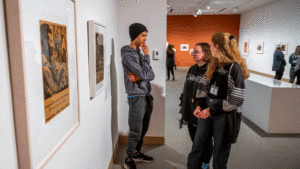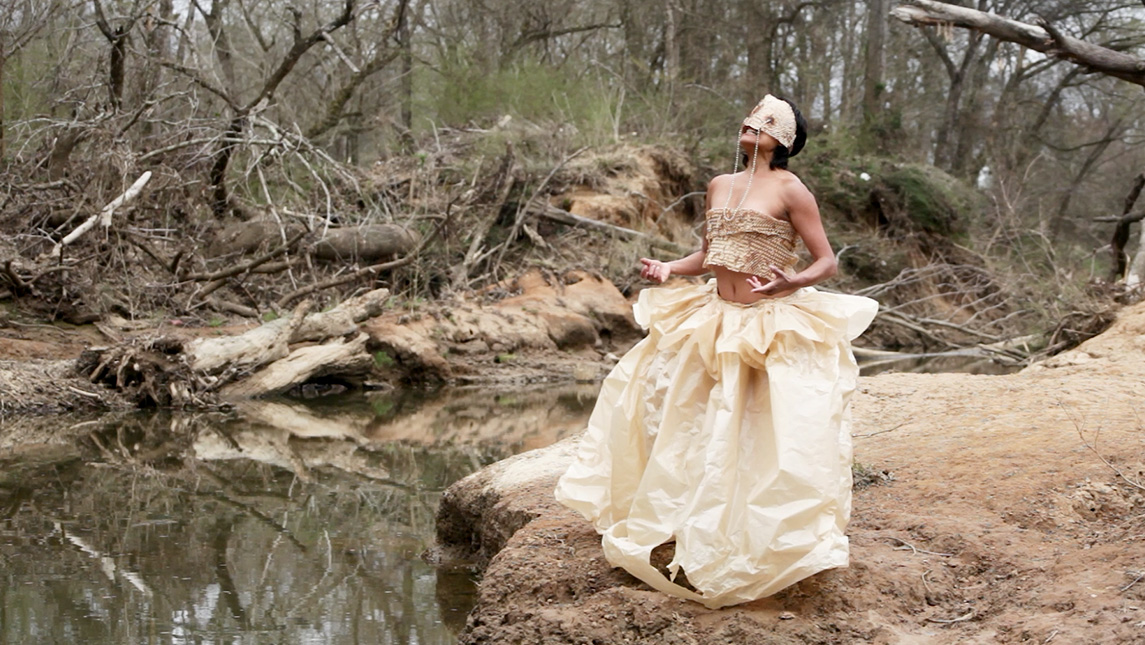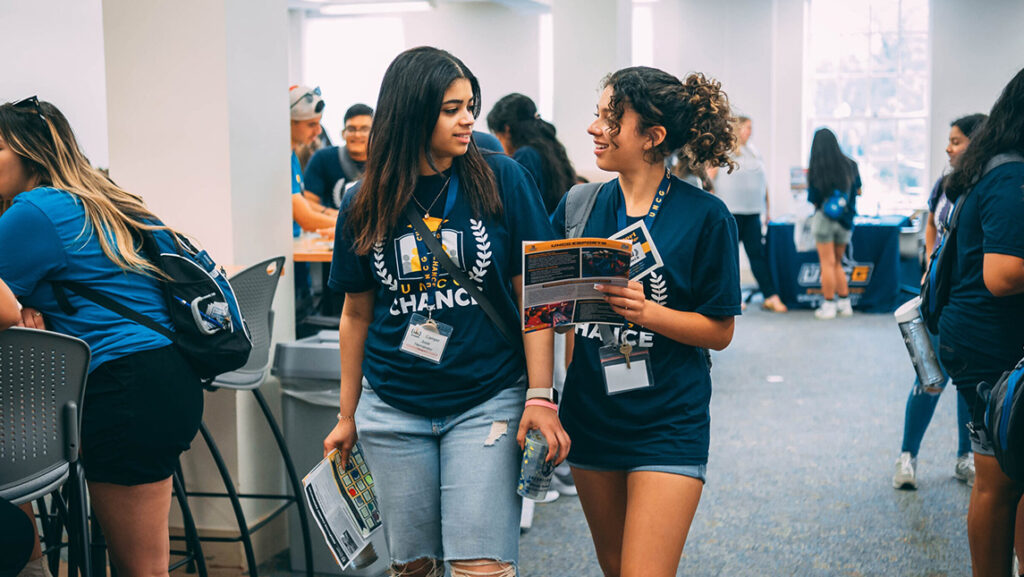What brings you value? The artist-in-residence exhibit Culture Mill Residency at the Weatherspoon Art Museum aims to explore this concept through performative art. Titled When We Were Queens… the exhibit exists as a collaboration between African-French dancer and choreographer Murielle Elizéon and acclaimed African-American cellist and songwriter Shana Tucker.
By emphasizing ideas of interaction and space, this exhibit asks participants to think about the way they understand the concept of “value.”
“We see the artwork in the Gilded Gallery as having value, for example. Now we are exploring the value in our bodies,” says Weatherspoon Visitor Engagement Fellow, Blake-Lee. “What does the Weatherspoon value about us, and what do they see in our performances and interactions that provide value? How is this a mutual and beneficial relationship?”
What’s unique about this exhibit is that it allows students and faculty to participate in something dynamic and with motion so close to campus. During the performances, Tucker and Elizéon work to provoke insight and responses from the audience, who might otherwise go overlooked in a gallery.
Tucker has worked with UNCG students before as a guest of the UCLS Concert and Lecture Series.
Interaction and value are things that the UNCG student group CoWAM aims to explore. CoWAM’s mission is to encourage UNCG students to amplify their voice in the arts through student-activated programming and involvement with the museum, its staff, and its collection.

“CoWAM is interested in conversation, community, and collaboration. That’s the ‘Co’ in CoWAM.” says the club’s lead director, Angelica Henry. “All three things are what Culture Mill is doing. They’re incorporating their idea of community at the Weatherspoon, performing with them in the same space and conversing. I’ve had very fruitful conversations with the performers, especially, and they’re collaborating for space. The space not only belongs to the Weatherspoon staff members and UNCG students, but it also belongs to the artists that are exhibited. And that’s not limited to Culture Mill. So I’m really fascinated with the way of that culture, and how it all so beautifully ties into the mission statement of CoWAM.”
The Weatherspoon Art Museum states that the goal of this exhibit is “to explore a shared ancestry of diaspora and violence through movement and music. Presented as a conversation between the artists and museum visitors, this work-in-progress illuminates the singularity of experience and the resonance embedded in the bodies of women of color from different African diasporic communities.”
During the nine-day residency, students, faculty, and community members will have the opportunity to engage with the artists through daily activations, open conversations, and performances in the museum’s galleries.
Elizéon co-founded Culture Mill, which is performing arts laboratory based in Saxapahaw, North Carolina. It utilizes artist residencies and educational outreach to engage audiences with local, national, and international artists.
“I think that students should come to the Weatherspoon for the culture,” says Henry. “I think students are scared of coming to art museums because of the idea that they’re inaccessible. The Weatherspoon is a research institution of its own, a resource for students on campus. So everything that’s done in the confines of the Weatherspoon is made for students. It’s made for people to access art consumption. I think it’s of the utmost importance that people come to see this performance. The Weatherspoon is strongly striving for exterior engagement. ”
The Culture Mill Residency will host their final work-in-progress on Saturday, April 1, at 3:30 p.m.
Find more opportunities for engagement with the Weatherspoon here.
Story by Dana Broadus, University Communications
Photography courtesy of Sarah Marguier
Additional photography by David Lee Row, University Communications



